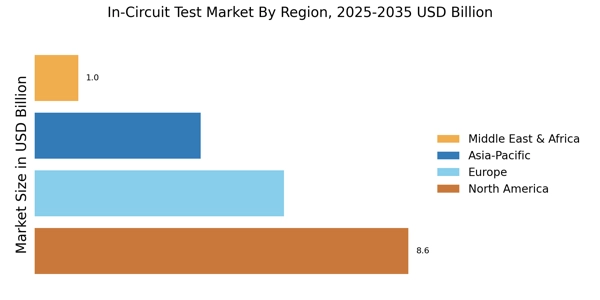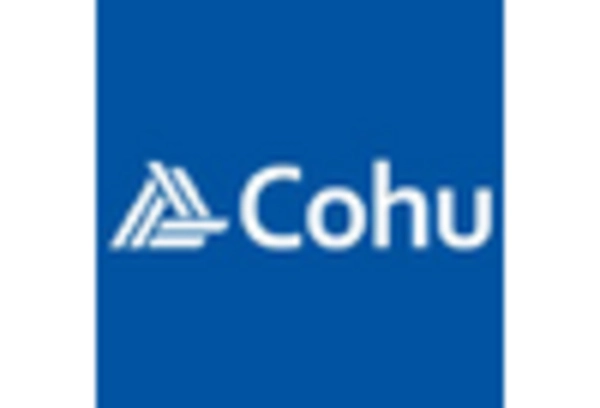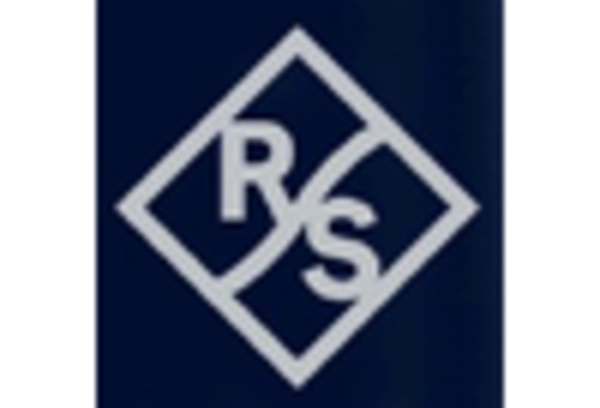Advancements in Testing Technology
Technological advancements are significantly influencing the In-Circuit Test Market. Innovations such as automated test equipment and enhanced software solutions are streamlining the testing process, making it more efficient and accurate. The integration of artificial intelligence and machine learning into testing protocols is also emerging, allowing for predictive analytics that can foresee potential failures. As testing technology evolves, manufacturers are increasingly adopting these advanced solutions to improve their testing capabilities. The market for automated test equipment is expected to grow at a compound annual growth rate of around 6% through 2025, indicating a robust demand for sophisticated testing solutions. This trend suggests that the In-Circuit Test Market will continue to thrive as companies invest in cutting-edge technologies to enhance their testing processes.
Growth of the Internet of Things (IoT)
The proliferation of the Internet of Things (IoT) is a key driver for the In-Circuit Test Market. As more devices become interconnected, the complexity and volume of electronic components increase, necessitating robust testing solutions. IoT devices require high reliability and performance, as they often operate in critical applications where failures can have severe consequences. The IoT market is anticipated to reach 1.1 trillion dollars by 2025, highlighting the demand for effective testing methodologies. In-Circuit Testing is essential in this context, as it allows manufacturers to ensure that each component functions correctly within the larger system. This growing trend indicates that the In-Circuit Test Market will likely experience significant growth as manufacturers seek to meet the rigorous demands of IoT applications.
Rising Demand for Consumer Electronics
The In-Circuit Test Market is experiencing a notable surge in demand driven by the increasing consumption of consumer electronics. As devices become more sophisticated, manufacturers are compelled to ensure the reliability and functionality of their products. The market for consumer electronics is projected to reach approximately 1 trillion dollars by 2025, which underscores the necessity for rigorous testing methodologies. In-Circuit Testing plays a pivotal role in this landscape, as it allows for the identification of defects at an early stage in the production process. This not only enhances product quality but also reduces costs associated with returns and repairs. Consequently, the In-Circuit Test Market is likely to expand in tandem with the growth of consumer electronics, as manufacturers seek to maintain competitive advantages through superior testing solutions.
Regulatory Compliance and Quality Standards
The In-Circuit Test Market is significantly influenced by the need for compliance with regulatory standards and quality assurance protocols. As industries such as automotive, aerospace, and medical devices become more stringent in their quality requirements, manufacturers are compelled to adopt rigorous testing methodologies. Compliance with standards such as ISO 9001 and IPC-A-610 is essential for market entry and consumer trust. The increasing emphasis on quality assurance is driving the adoption of In-Circuit Testing, as it provides a reliable means of ensuring that products meet these standards. The market for quality assurance testing is projected to grow at a rate of approximately 5% annually, indicating a strong demand for effective testing solutions. This trend suggests that the In-Circuit Test Market will continue to expand as companies prioritize compliance and quality in their production processes.
Increasing Complexity of Electronic Circuits
The growing complexity of electronic circuits is a significant driver for the In-Circuit Test Market. As devices incorporate more components and functionalities, the potential for defects increases, necessitating more rigorous testing methods. The trend towards miniaturization and integration of multiple functions into single chips has made traditional testing methods less effective. In-Circuit Testing provides a solution by allowing for comprehensive testing of individual components within a circuit, ensuring that each part functions correctly before final assembly. This complexity is reflected in the projected growth of the semiconductor market, which is expected to reach 600 billion dollars by 2025. As manufacturers strive to meet the demands of increasingly intricate designs, the In-Circuit Test Market is likely to see sustained growth as a critical component of the production process.



















Leave a Comment